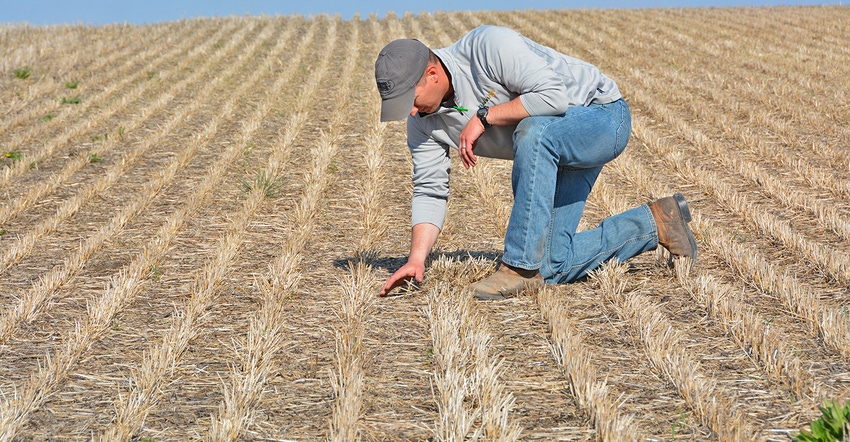June 26, 2017

Scott Huso and Tim Brakke are aggressively converting more of their land from conventional tillage to no-till, even though it’s tough to no-till where they farm.
Their Ridgeline Farm is located in northeast North Dakota near Aneta. The growing season is short, and the planting window is often small. Since the mid-1990s, northeast North Dakota has been wetter than normal in the spring. Most farmers use conventional tillage to manage residue and dry out fields.
Brakke has farmed over 40 years and started transiting to no-till 15 years ago. Some of his fields have been continuous no-till for 15 years. In 2009, he and Huso formed a partnership called Ridgeline Farm. Brakke, who also is a certified public accountant, was interested in a succession plan for the farm. Huso, 36, was looking for a way to get started farming. Huso now manages the day-to-day operations. They grow corn, soybeans, wheat, barley, pinto beans and canola.
Brakke and Huso are interested in doing more no-till because it eliminates wind erosion, which is a common though underappreciated problem across the northern prairie.
No-till also reduces compaction and promises to boost organic matter. The higher the organic percentage, the more water the soil can hold. An extra inch of moisture in the soil profile in the late summer can make a big difference in yield, Huso says.
No-till enhances soil health, too. It helps keep the soil biologically active, which in turn speeds up the recycling of residue into plant food.
“There are a lot of benefits to no-till, and we don’t think we are losing any yield or profit by no-tilling instead of using conventional tillage,” Huso says.
Huso and Brakke expect weather is going to change, too.
“We are going to have some dry years again,” Huso says. Then, the extra moisture they can save by no-tilling might have a big impact on yields.
“We are no-tilling for the dry years,” Huso says.
You May Also Like




